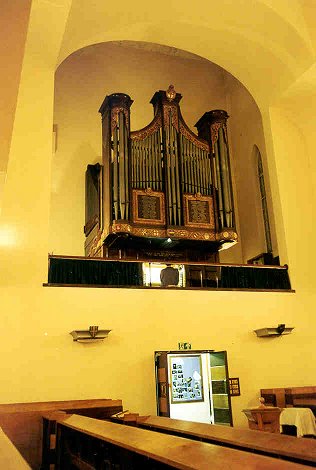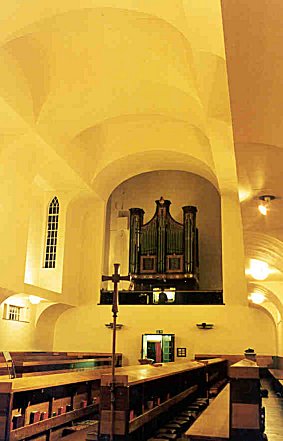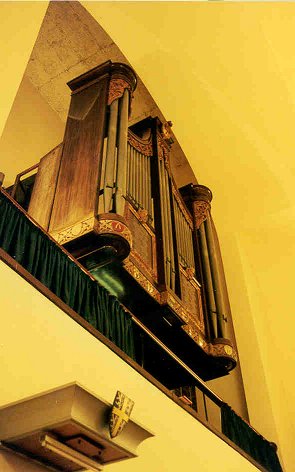Back to list
St Hild and St Bede College Chapel, Durham
 |
The College
of St Hild & St Bede is the largest college of Durham
University, and lies away from other colleges, on the north-east side
of the City centre. Originally St Hild's and Bede College were separate,
womens' and men's Teacher Training Colleges, but were amalgamated within
the University some years ago. The Chapel of St.Bede's is a spacious and
lofty building, possessing a wonderful acoustic as a result of its plain
plastered interior.
The organ has a long and complex history. It was originally built for the old Bede chapel in 1891 by Harrison & Harrison, with the organ divided either side of the east window, but much remained "prepared for". Two stops were added in 1913 by the same firm, and in 1939 the instrument was moved to the new chapel. New mahogany casework was provided in 1948, designed by Seely and Paget. It was rebuilt by the original builder in 1977, and received an overhaul in 1991, at which time a Swell Flageolet was prepared for through to the soundboard, and a Pedal Contra Fagotto was prepared for at the console only. In 1998 the Swell Flageolet was realised, and the Mixture was recast, but with its composition unchanged. |
 ..........
..........